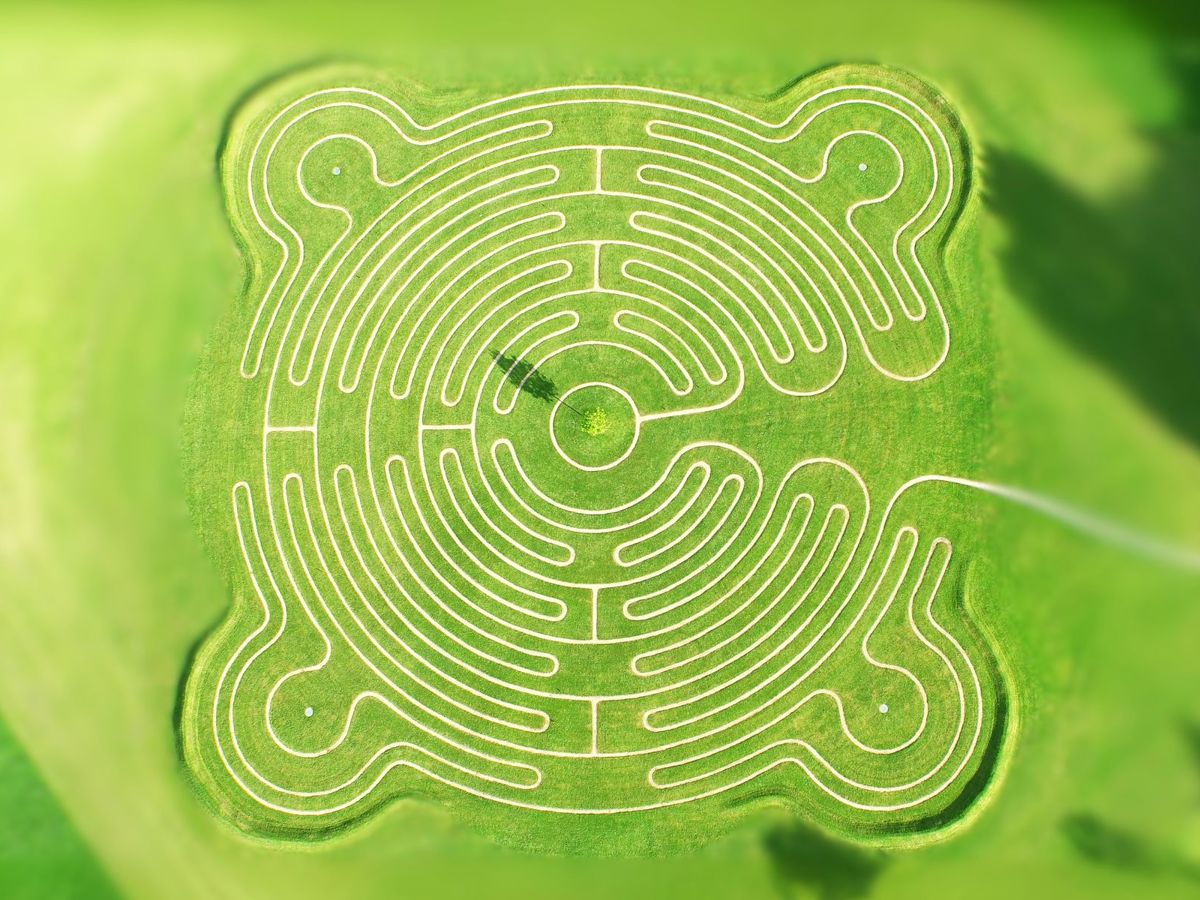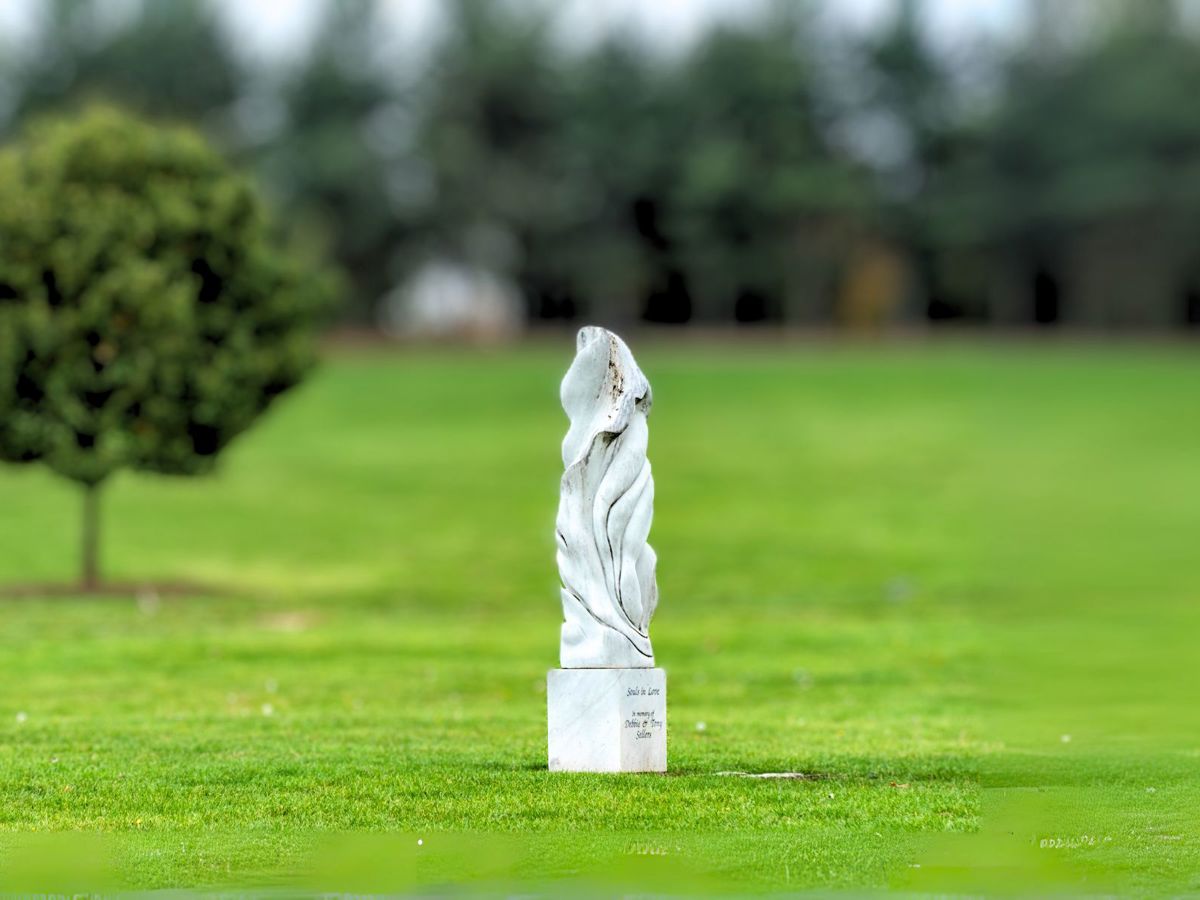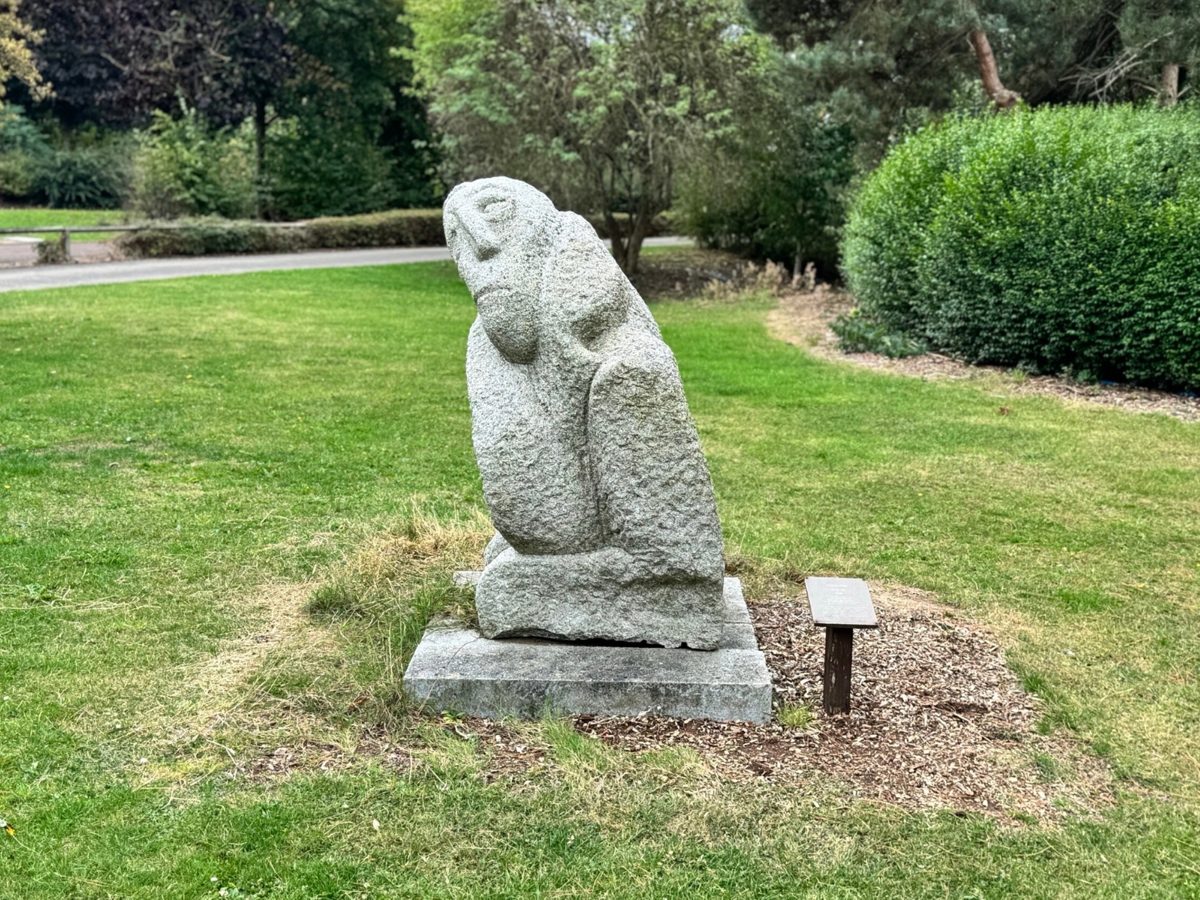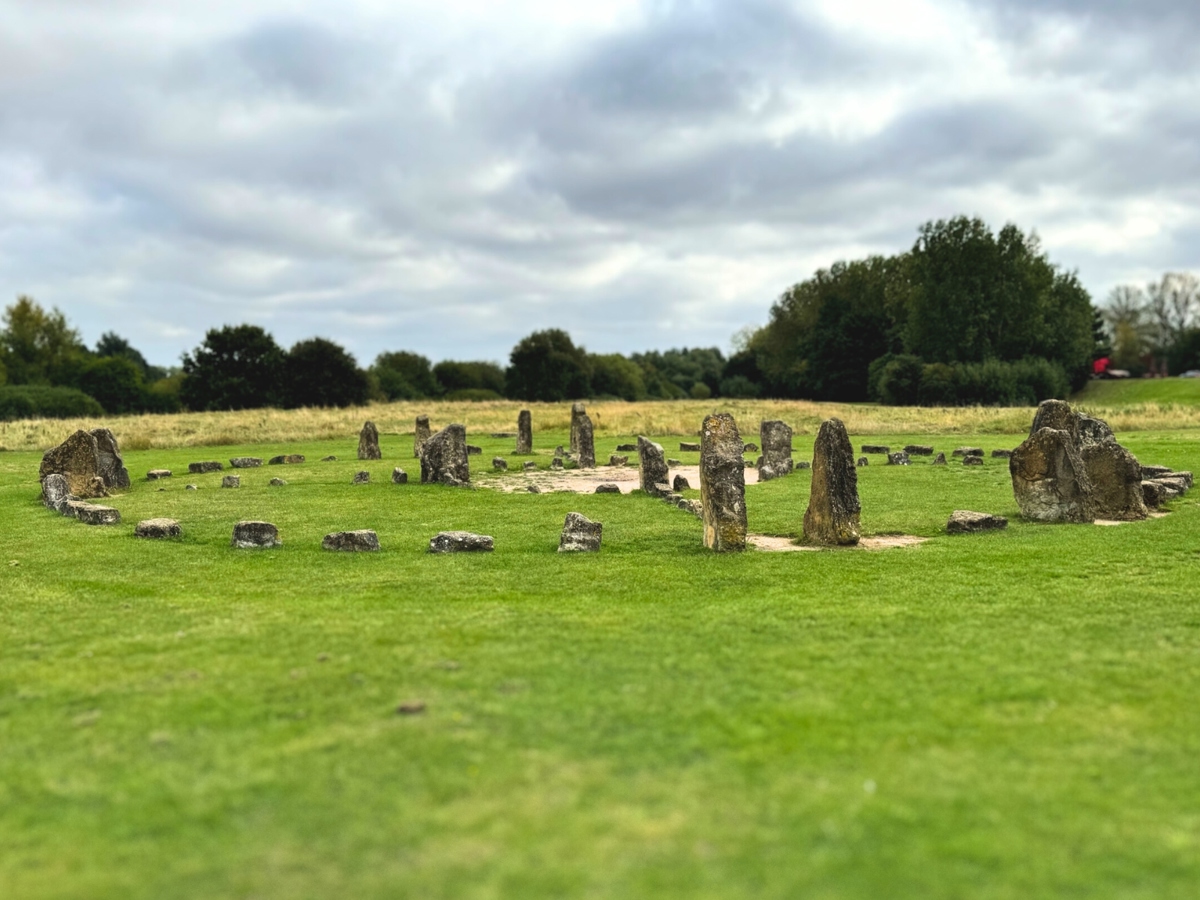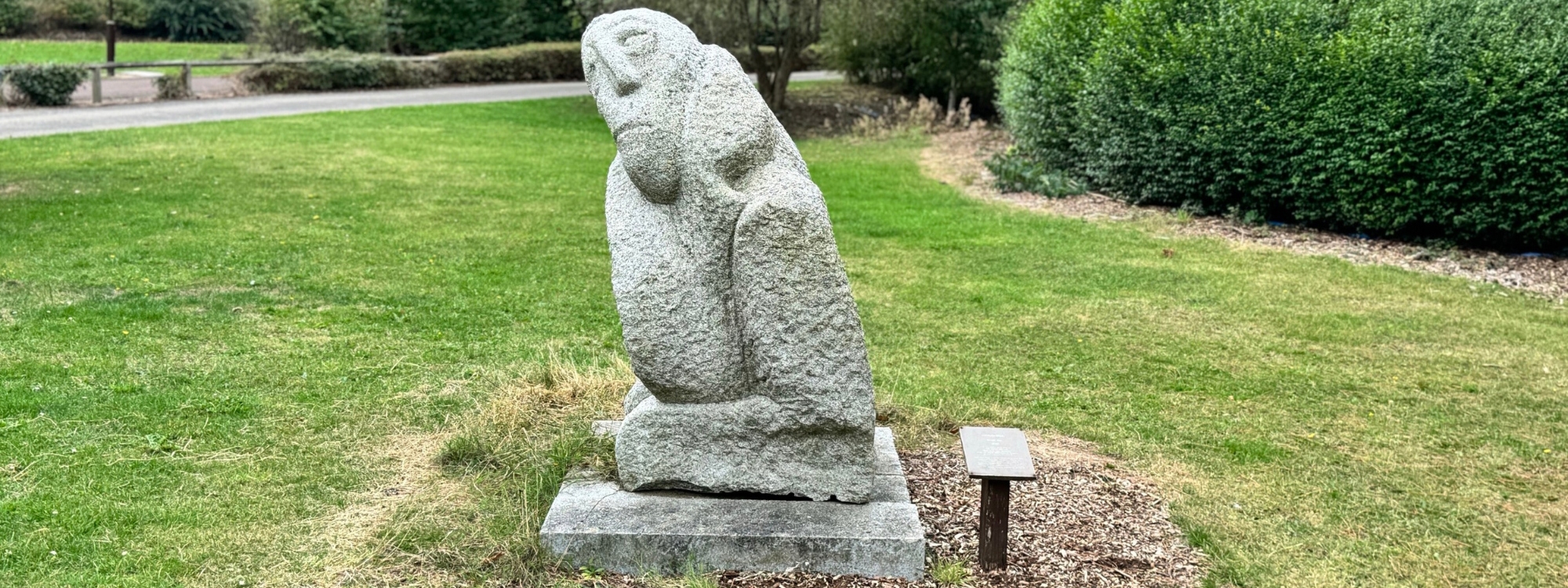
Hiroshima Departed by Ronald Rae (1985)
The third piece of Ronald Rae sculptures in Milton Keynes parks can be found in the grounds of the Buddhist Temple at Willen Lake North. Donated in 2007 to the Temple, the piece is carved from granite in memory of those who died at Hiroshima. This sculpture warns of the tragedy of nuclear war. Every year on the 6th August, Hiroshima Day, the Nipponzan Myohoji Buddhist monks and nuns organise a floating lantern memorial service at the lakeside.
Ronald Rae is a fellow of the Royal Society of Sculptors and has had a long and successful career working in carving granite on many public and private commissions. He has had major exhibitions of hand carved granite sculptors across the UK. Much of the granite Rae has used for his sculptures comes from Scotland and the silver grey granite of War Veteran, Animals in War and Hiroshima Departed is from Creetown and Dalbeattie quarries in the Solway Firth.
Find this art work in the garden at Willen Temple. What3Words location pupils.quality.flirts.
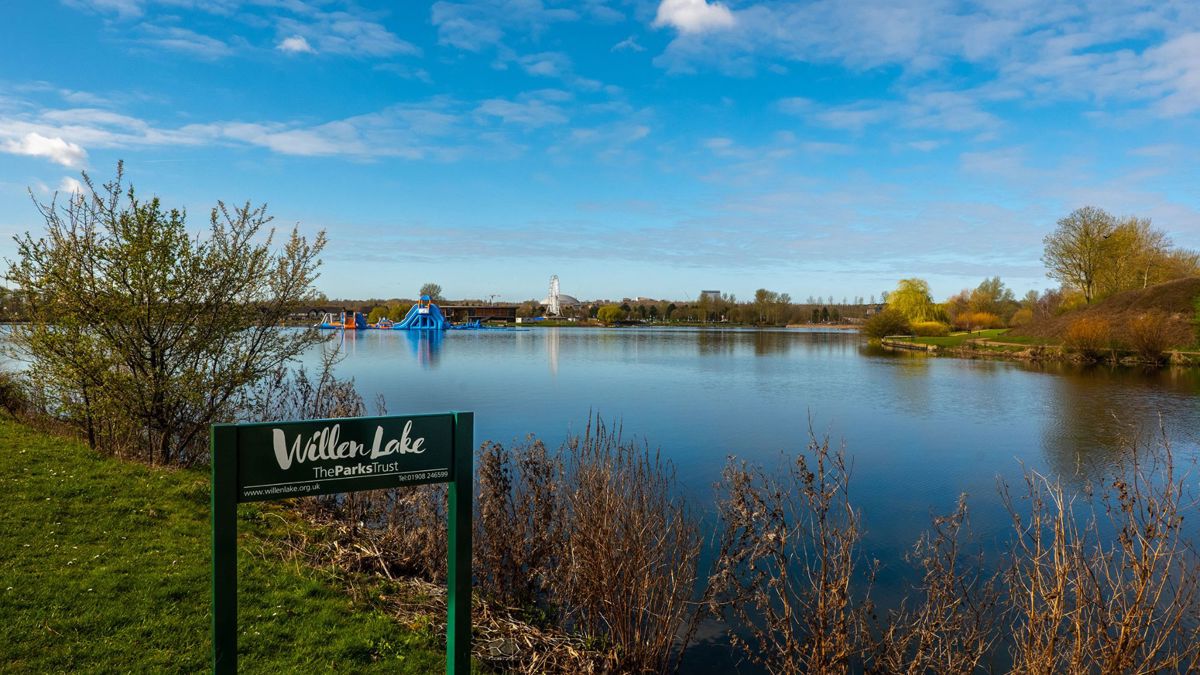
Willen Lake is one of Britain's largest purpose-built balancing lakes, spanning around 100 acres. It was created in the 1970's during the development of Milton Keynes to help prevent flooding. The park features two lakes to explore and has a wide range of activities on and off the water.
There are many cultural landmarks and public art pieces to explore at Willen Lake. In addition to the Labyrinth and Medicine Wheel, you will find the distinctive Buddhist Temple. The public is welcome to visit the temple when it is open. The village of Willen, with its church designed by Robert Hooke, is also on the edge of Willen South Lake.

